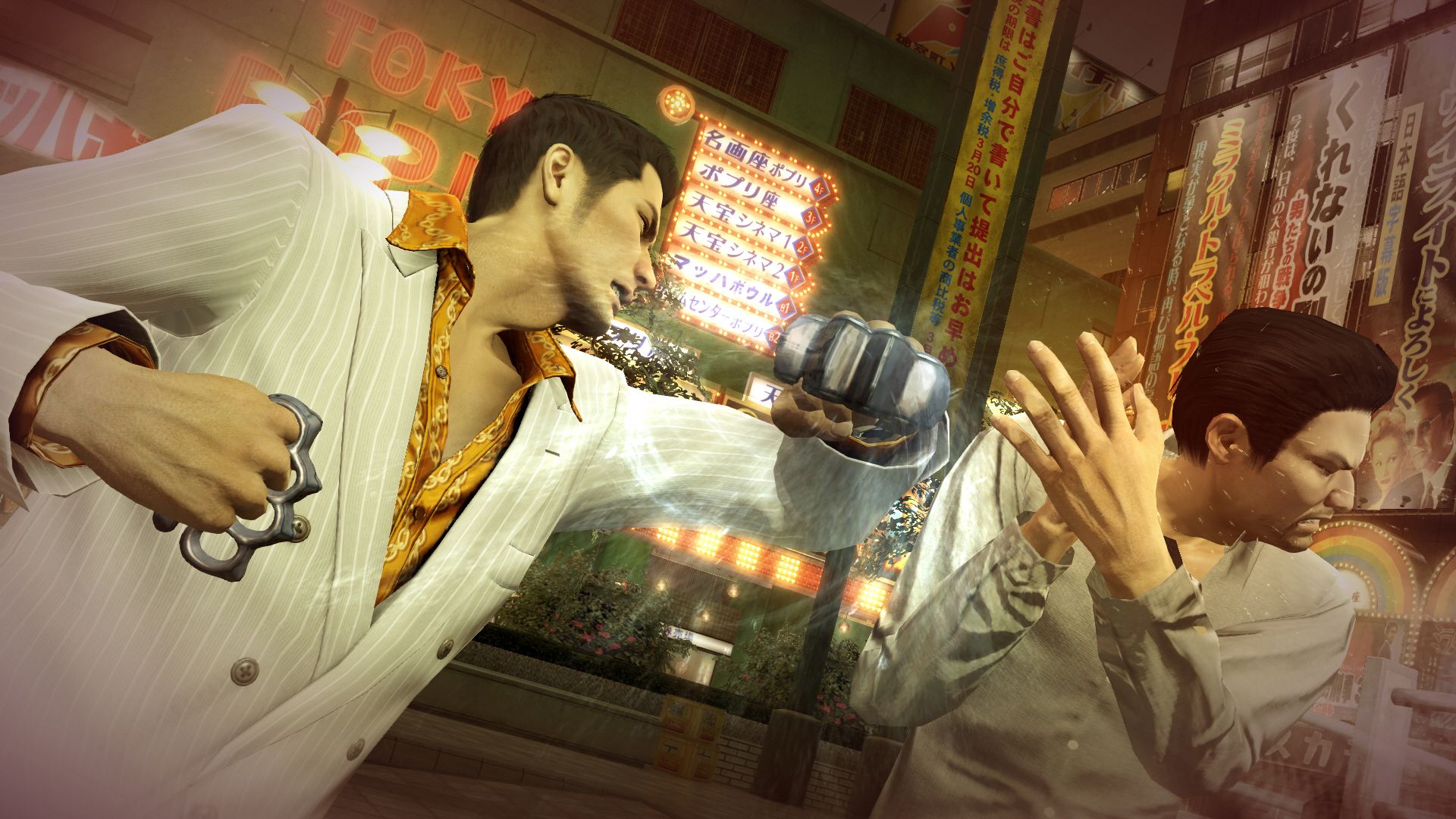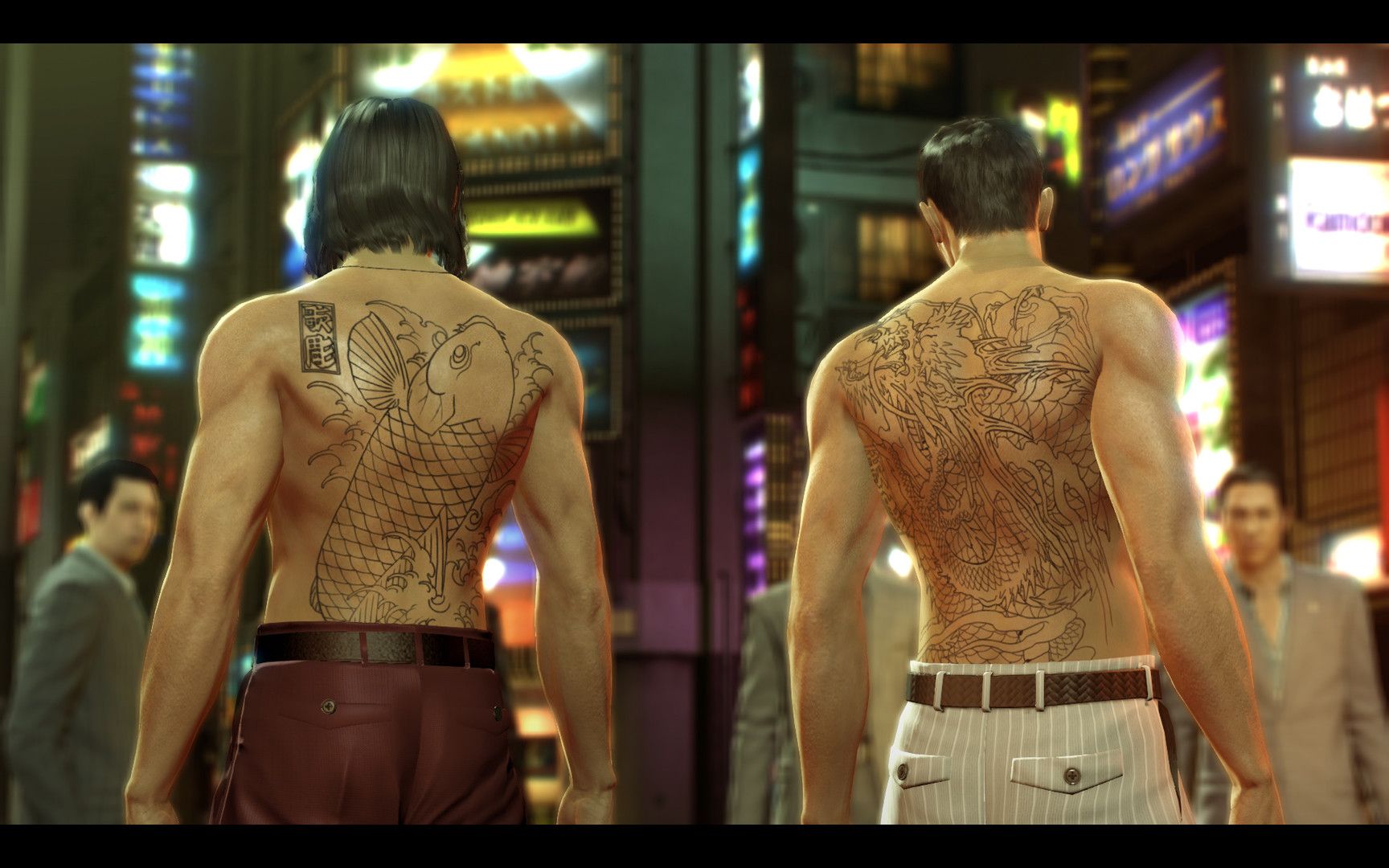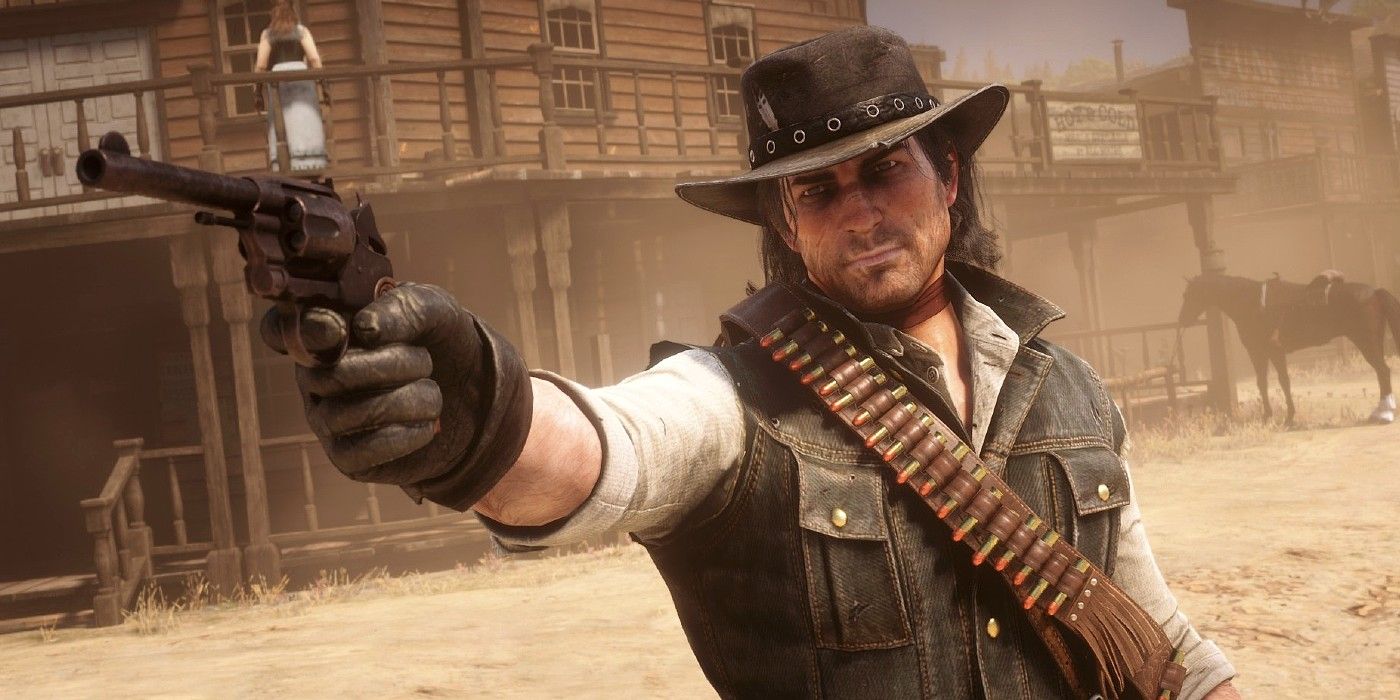Duh-dun-dun – whackawhew! That’s my acapella rendition of the first four notes of the Yakuza 0 opening theme, AKA the best intro track for any video game ever. Believe me, I pay an outrageous amount of attention to this sort of thing – Persona 5’s Wake Up, Get Up, Get Out There comes remarkably close to Yakuza 0, while Final Fantasy 14 boasts gorgeously serene main menu music. Yakuza 0, though… I honestly don’t think it can ever be topped.
Those first three notes punching right into the screeching bend are packed with context – especially if you happen to be watching the intro cinematic while listening, Kiryu’s lazy cigarette conveying pretty much all you need to know about his character in a single, almost static action. It’s all about attitude with him, and with Yakuza in general – it’s cool and reserved to the tune of an explosively rip-roaring riff. This attitude is best captured by the constant juxtaposition of well-dressed gangsters with the untamed but highly-controlled metal melody, where the bend compresses the power chords by taking their momentum and elevating it into a kind of tinny, slowly quieting single note. I think the first four notes in the Yakuza 0 theme, which span around two seconds total, are probably the best musical representation of Kiryu you can get – fiery mayhem that sounds like knuckle dusters meeting molten metal, but mayhem that’s distilled before it can finish manifesting.
After four rounds of that power chord triad and an accompanying riff – the last of which wails to lift the intro into the main body of the tune – you get a much faster alternation of the core melody with palm-muting, which is that sound where you hear the strum but no distinct chord. This serves as excellent motion control as the opening cinematic begins to bring you through various scenes, respecting the introductory refrain while gradually increasing the pacing. Also, it slaps.
Once the theme’s wall of sound is constructed, the track introduces an extra harmony played with ascending tremolo picking (essentially, very fast alternations where you pick the same string up and down) that’s an octave higher than the core melody, which continues to build on the same foundation. If you listen to the tune while you’re reading this, you’ll know what I mean – it’s the first section of the secondary guitar line, superimposed on top of the main chords we hear right from the beginning.
The genius thing about this is that it ascends on the first count, descends on the second, ascends further on the third, and then goes into a much higher pivot to round out the fourth, which is an excellent stylistic flair but also a cleverly functional means of coming back down the fretboard. This paves the way for the walking down we hear in the next section, which in turn bounces back towards the much higher suspensions and wails later on. What I’m getting at here is that the aural peaks and valleys we hear throughout the secondary guitar line in this track resemble the same structure as the bizarrely diverse sequence of cutscenes it’s designed to accompany in the opening cinematic. It’s a subtle way of communicating how wild all of this is by leaning into extreme audiovisual variance without making it overly dissonant, which would sound crap. Basically, the guitar specifically goes up, down, and around while the scenes go from showers, to cabarets, to people crying while holding a gun to someone’s head. But at the same time, that extra texturing provided by the intro riff, still playing beneath the higher guitar, keeps the attitude and grittiness alive throughout the whole tune. It’s all connected to the same core, but that doesn’t mean each individual section can’t be radically different from the rest in style, mood, and tone, despite being played in the same key.
And it is different. The next shift moves towards more roundabout sections designed around the same root notes, using slightly alternating riffs to create a more cyclical sound that changes with each revolution. In general, the entire theme plays on the same motifs in various different ways, always in 4/4 – meaning that there are four bars in each phrase – but to different tempos, and with different phrasing. It’s as consistent as Yakuza 0’s seamlessly stitched-together narrative, but filled with different melodies and beats that make every single chapter – or in the case of the track, every section – a joy to play or listen through.
My favourite part of the theme comes right near the end, when it hits the wailing notes that sound as if they stretch outside the frame of the tune. Coming right after the part that packs ten notes into each bar, changing only the last one between each round, it’s emotional before you even play through the game for the first time. I’m not trying to sound like a wanker here, by the way – it’s a brilliant use of minimalistic shifts in songwriting to complement the cohesive whole.
I think it says a lot about Yakuza 0 for its opening theme to be this clearly contextual of the game. It’s not just a tune that Toshihiro Nagoshi thought sounded cool and put there for no reason – it was quite clearly selected with the game it’s designed to introduce in mind. I know Yakuza 0 technically has rhythm elements in its karaoke minigames, so it might be tempting to associate it with them, or with any of the other fantastic songs in its overall soundtrack. But the intro theme is what rings through with every single punch Kiryu throws. When he hits the deck and gets back up, I hear those same emotional wailing notes I mentioned above screech with such violence that the grunts and taunts of enemies are almost completely drowned out.
It’s a theme that doesn’t just establish the tone of the game – it perfectly underscores it from start to finish. It’s fast-paced and violent, but it’s also got a beautiful, rapidly changing melody that never strays too far from its origins. It’s the soundtrack to every footstep and boot-stomp Kiryu takes and makes as he stampedes through Kamurocho. I’m not sure it works quite as well for Majima, but that’s probably just because not a whole lot of people breakdance to metal. Then again, this is Goro Majima we’re talking about.
The Yakuza 0 opening theme ends with a sequence of highly-strained notes, but the last one lingers. It’s like the sound of a curtain call, except way more badass. I think this speaks to Kiryu’s consistency as a character, as does the fact that the end seamlessly segues back into the beginning. Given how hard this track hits, I don’t think that phenomenon implies any kind of repetition or stagnation – it’s much more vital than that. It’s like the calm before the return of a ferocious storm, which is a beat-for-beat sonic rendition of every single one of Kiryu’s microcosmic substories in terms of their relationship with the overarching narrative. I’ve never heard a song in a video game that fits its main character so well, and I honestly don’t know if I’ll ever hear one again.
Plus it’s just a banger, isn’t it? Get that shit on Spotify ASAP, we’re starving here.
Next: Help, I’m About To Spend Too Much Money On The New Edition Of The Silmarillion
- TheGamer Originals
- PC
- SEGA
- Yakuza
- Xbox One
- Ps5
- ps4
- Xbox Series X
- yakuza 0
Cian Maher is the Lead Features Editor at TheGamer. He’s also had work published in The Guardian, The Washington Post, The Verge, Vice, Wired, and more. You can find him on Twitter @cianmaher0.
Source: Read Full Article



